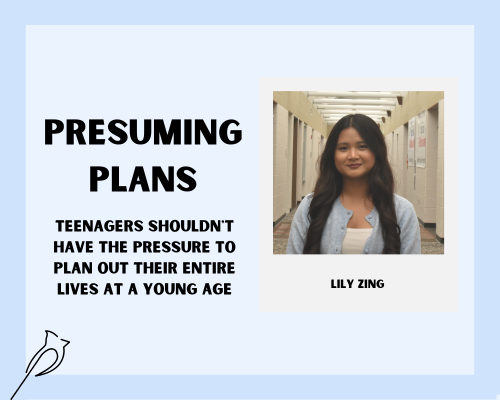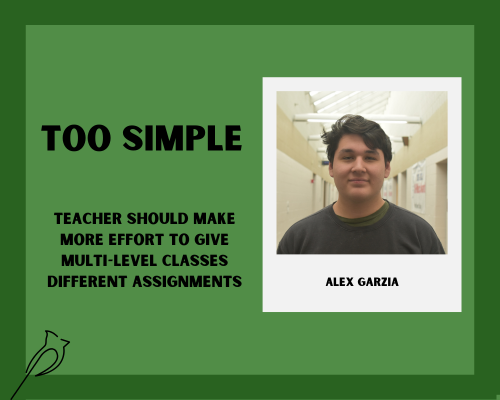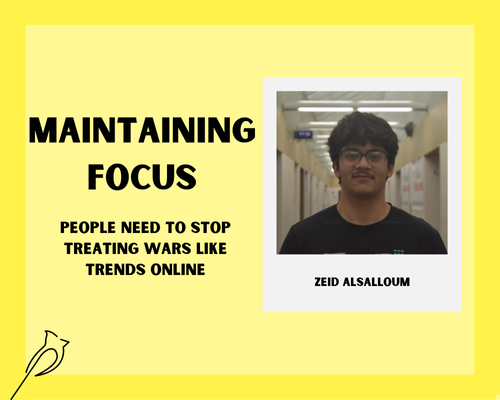Let it out your way
Having a creative outlet is essential for people to have a sense of self-growth
Being able to name emotions is something I was taught from an early age. Instead of getting punished when I cried and acted out, I was often asked what was wrong and how I was feeling.
Even if 6-year-old me was not happy to explain that I was mad because my sister stole my Barbie doll, it was important to be able to identify my emotions. The problem started later. I realized that the older I got, the harder it was for me to put a name to the things I was feeling. It wasn’t a simple answer like saying I was sad or yelling that I was angry. It was this whirlwind of conflicting feelings that made it infinitely harder for me to take the time to process them.
This became apparent to me when I began high school. I discovered that I didn’t have a way to express emotions in a way that helped me process them. I could name a thousand different words to say how frustrated I was when doing math homework, but the minute someone asked me to explain why I was frustrated, I froze. I needed something to help me be able to connect with myself and how I was feeling.
I felt all of these things, but I didn’t learn how to let myself truly feel them until much later. I held grudges for years and often cried over events that happened years before. I could say that I was sad or confused, but I couldn’t process and think for an answer as to why I was that way. I never reflected on how I felt to the point that I felt like this stunted me emotionally.
I told myself that I had processed them by just saying I had a specific reaction. It was short and sweet: I felt mad and then I didn’t. There was nothing after for the feelings I had, nothing to look back to and nothing to use as an outlet. I thought that being able to let go, without an outlet or anything that channeled my ability to think through what I felt, would be as easy as falling asleep or breathing.
Unfortunately, it’s not that simple.
In Dr. Gregg Henriques’s article “Understanding Emotions and How to Process Them,” he brings the point that “emotions prepare an individual for action.” In simpler terms, emotions make someone do things. They drive the body to run when scared or cry when sad.
Emotions are the fuel that ruled over my actions. But, all because I went through the motions doesn’t mean I grew. I never truly learned anything because of my emotions. They were just feelings that I had and held on to for lack of emotional maturity. In order to progress, I needed to process the reasons behind what I felt. I desperately was in need of something to help me destroy my cycle of self-destruction brought on by my emotional immaturity.
I learned very quickly that naming an emotion is much easier than processing one. The process didn’t even seem to be needed until I was going through my years at SHS. During my time at SHS I also had been surrounded by creative outlets that I had chosen to ignore. I would excuse the act of painting a picture, or anything else being used as a creative outlet to process emotions, as something I was unable to do. Whether I wasn’t creative enough or skilled in that area, there was always an excuse to not use a creative outlet. I would roll my eyes and dismiss acts of emotional expression under the thoughts that I don’t need it.
It was around my sophomore year that I realized how unhealthy this was. I was holding onto the hurt and anger I felt and taking it out on others. In arguments, I would yell out problems that my friends thought we solved years ago. I remember a close friend telling me that I had taken to “living in the past.” I think that this was when I opened my eyes to how necessary being able to process everything was and how I would start.
I remember going to my room and searching for a folder and an empty notebook that afternoon. In the folder was a packet I had gotten the year before and it gave me a list of how to process events. The list had a series of outlets used to process events and feelings. I chose one at random, settling for a writing approach for a creative outlet. I shook my head of thoughts saying I shouldn’t because I wasn’t skilled enough to write or paint to let out all of my feelings, and I stuck with it. I needed this, this outlet was important even if I had been so against it earlier in life.
This outlet changed my life and I ultimately believe this made me a better person.
I was able to write what I did during the day and talked about random tidbits of my life while not feeling the need to describe emotions with a sense of pressure to find a deeper meaning. By using a creative outlet to express and think about my emotions I saw myself learning to let go. I was able to stop the grudges I held unfairly and I felt like I was able to express myself in a healthy way.
The outlet, I realized, is different for everyone. I took to writing to let things go and make sense of everything, while my friends took to activities like painting or singing.
It was the same at its core. All of them were a way for someone to express themselves. Having this outlet is vital to being able to process emotions. In order to acknowledge and grow from my emotions, I had to identify and be able to see how I was feeling. I could name a million different emotions, but the key to a creative outlet is to see them as representations of my emotions.
Processing and expressing feelings is a key role in life. It’s important in so many different ways and there is a unique way to represent how I felt. These outlets gave me the opportunity to reflect and grow as a person.

Hello! My name is Bridget and I am a senior at SHS. I am also the entertainment editor for the 2021-2022 school year. Since this is my first time being...







